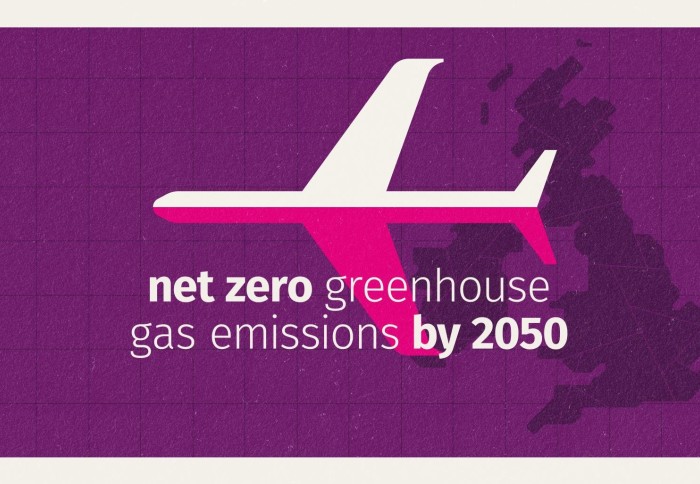Academic, industry and policy leaders debate low carbon aviation fuels

How can low carbon fuels for aviation contribute to the UK's reaching Net Zero by 2050?
The Institute for Molecular Science and Engineering has published a policy paper on how to promote sustainable, low carbon aviation fuels.
Over the past year, IMSE has brought together researchers in the Department of Chemical Engineering, Department of Life Sciences and the Centre for Environmental Policy to evaluate the three fuel types most often considered to be low-carbon alternatives to kerosene. These are biofuels, power-to-liquid (synthetic) fuels, and hydrogen.
Reducing the CO2 impact of aviation is timely as the UK moves towards Net Zero. Chris Skidmore MP’s independent review of Net Zero clearly identifies aviation as one of the sectors where the UK is falling behind on its decarbonisation targets.
Imperial’s researchers based their assessment on the total greenhouse gas emissions of producing and burning the fuels. They also analysed what resources are required to scale up production to meet national demand.
Finally, they recommended the direct, detailed, and actionable policies needed to achieve low-carbon aviation .
Calculating CO2 emissions
The authors reviewed CO2 emissions of alternative fuel types. The three fuel pathways with the lowest emissions impacts were: producing hydrogen by electrolysis of water (green hydrogen) and powering this process with wind energy, producing power-to-liquid fuels with CO2 from direct air capture and green hydrogen (made with renewable electricity), and producing biofuels from forestry waste.
Methods of calculating biofuels’ carbon emissions are likely to underestimate their impact, especially when forest feedstocks are considered. The emissions impact of green hydrogen production depended strongly on the method of electricity generation used to power the process.

Barriers to scaling up
All three fuel types face significant barriers to deploying at scale. In the UK, biofuel feedstocks are limited, as they can only be made from waste feedstocks, e.g. agricultural, forestry or municipal waste. The total quantity of biofuel feedstocks available is not enough to meet even 20% of UK aviation fuel demand. Also, repurposing agricultural and forestry waste to make fuel will have detrimental environmental effects.
Power-to-liquid fuels are currently not produced at scale anywhere in the world. Producing these fuels at scale would require a very significant increase in UK low carbon electricity capacity, to power the direct air capture process for CO2, and also to make green hydrogen. Using hydrogen itself as a fuel is also limited by low-carbon electricity generation capacity. Hydrogen aircraft would require significant redesign and investment in airport infrastructure.
In their assessment, the authors were very much in line with the Royal Society’s policy briefing Net zero aviation fuels: resource requirements and environmental impacts, published in February 2023.
What policies are needed
IMSE and the Brahmal Vasudevan Institute for Sustainable Aviation organised a panel discussion of the report and its recommendations on 1 March 2023.
Watch the launch event for the report here
The audience included NGOs and SMEs in the sustainable aviation space. A molecular science and engineering perspective is central to developing policy interventions which will deliver net zero goals.
The report called for policy support only where a low-carbon fuel technology has been demonstrated to provide at least 50% CO2 emissions saving versus kerosene when deployed at scale. The report’s two other criteria for sustainable fuels are that there should be enough feedstock for its production at a meaningful scale and that the use of the fuel should not have a negative environmental impact.

The panel discussed if and how to prioritise support for each fuel type, and how to pay for these new fuels, which are all more expensive than kerosene.
The government and aviation industry currently prioritise biofuels as a transitional fuel, but the report considers this a mistake. This is because the reduction in greenhouse gas emissions with biofuels is relatively small, the fuels demand considerable energy to produce, and there are limited supplies of feedstocks.
The panel also took questions about what technology to use to produce enough low carbon electricity to make hydrogen and power-to-liquid fuels, and the amount of infrastructure change required to develop hydrogen-powered aircraft.
Finally, the panel discussed how to take the effects of non-CO2 emissions into account. These include nitrogen oxides (NOx) and contrails, for example. They are estimated to have a 2–3 times greater climate change impact than CO2 alone. Quantifying these effects is a major research question at the moment.
The panel discussing the advantages and disadvantages of each alternative fuel. Photo: Imperial College London.
Read the executive summary and full paper on Low carbon fuels for aviation here
Article text (excluding photos or graphics) © Imperial College London.
Photos and graphics subject to third party copyright used with permission or © Imperial College London.
Reporter
Dr Isabella von Holstein
Department of Computing
